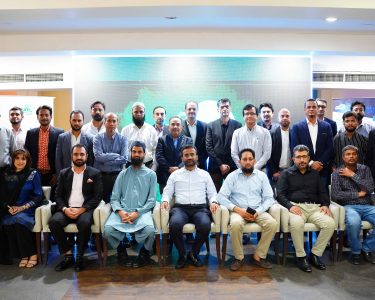In today’s rapidly evolving digital landscape, artificial intelligence (AI) is transforming industries by offering new capabilities and efficiencies. However, while AI copilots can enhance productivity, they are also inadvertently making internal breaches easier and more expensive to defend against.

The Double-Edged Sword of AI Copilots
AI copilots, designed to assist employees in completing tasks more efficiently, are becoming ubiquitous in workplaces. These intelligent assistants, often embedded in software tools, help streamline processes, provide recommendations, and automate repetitive tasks. However, with this increased capability comes a significant risk: the potential for these AI systems to be exploited in ways that compromise internal security.
The primary issue lies in the AI’s ability to process and generate large amounts of data quickly. While this is beneficial for legitimate tasks, it also means that AI copilots can inadvertently facilitate malicious activities. For instance, an AI copilot could be manipulated to generate phishing emails that are highly personalized and convincing, increasing the likelihood of an internal breach. Additionally, AI systems that have access to sensitive data could be tricked into sharing that information with unauthorized users.
Easier Breaches, Higher Costs
The nature of AI systems makes them particularly vulnerable to exploitation. Because AI copilots are designed to assist users by making predictions and suggestions, they often require access to vast amounts of data. This access, combined with their ability to learn and adapt, means that a compromised AI system can cause significant damage before the breach is even detected.
Moreover, the very sophistication that makes AI copilots effective also makes them difficult to defend against when they are compromised. Traditional cybersecurity measures are often not equipped to handle the unique challenges posed by AI-driven threats. This has led to a situation where internal breaches facilitated by AI are not only more common but also more costly to mitigate.
One of the most concerning aspects of AI-related breaches is their potential to go undetected for extended periods. Since AI systems are designed to learn and adapt, they can become better at hiding their tracks over time. This means that by the time a breach is discovered, significant damage may have already been done, and the costs of recovery can be astronomical.
The Human Element
Despite the sophisticated nature of AI copilots, the human element remains a critical factor in both the exploitation and defense of these systems. Employees who are unaware of the potential risks associated with AI copilots may inadvertently contribute to a breach. For example, they might use the AI in ways that expose vulnerabilities or fail to recognize when the AI is behaving suspiciously.
Training and awareness are crucial in mitigating the risks associated with AI copilots. Organizations must ensure that their employees understand the potential dangers and are equipped to use AI tools safely and responsibly. This includes educating employees on how to recognize signs of AI exploitation and encouraging them to report any suspicious activity.
At the same time, organizations must also invest in advanced cybersecurity measures that are specifically designed to address the challenges posed by AI systems. This includes implementing AI-driven security solutions that can monitor and protect other AI systems, as well as developing protocols for responding to AI-related breaches.
Looking Ahead: The Future of AI and Cybersecurity
As AI continues to evolve, so too will the threats associated with it. Organizations must stay ahead of the curve by continuously updating their security protocols and investing in new technologies that can counteract the unique challenges posed by AI copilots. This may involve collaboration between cybersecurity experts, AI developers, and policymakers to develop comprehensive strategies that protect against AI-driven threats.
Furthermore, there is a growing need for regulatory frameworks that address the risks associated with AI. Governments and industry bodies must work together to establish guidelines for the safe and responsible use of AI, including standards for AI security and protocols for responding to AI-related breaches.
In conclusion, while AI copilots offer numerous benefits, they also present significant risks that organizations cannot afford to ignore. By taking proactive measures to educate employees, invest in advanced cybersecurity, and collaborate on regulatory standards, organizations can harness the power of AI while minimizing the potential for internal breaches.
For more insights on the evolving role of AI in cybersecurity, visit Digital Digest, your go-to resource for the latest news and analysis in the digital world.




